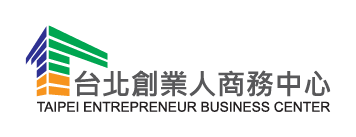
Instead of allocating costs to departments, lean accounting categorizes costs based on total value stream profits. Value streams are a set of actions that contribute to fulfilling a customer’s demand, from the initial request to the customer’s appraisal of the product or service. Activity-based costing (ABC) is a costing system that breaks down overhead and indirect costs, according to the actual consumption of each product and service.
- It’s easy to lose track of cash infusions, loan statements, and sales revenue.
- Managers and employees may use cost accounting internally to improve your business’s profitability and efficiency.
- This cost is, therefore, most relevant for two mutually exclusive events.
- There is typically a bottleneck somewhere in the company that limits the amount of profit that the business can generate.
- If so, the relevant cost accounting is to constantly monitor the utilization of this constraint, the costs incurred to run it, and the throughput (sales minus all variable expenses) generated by it.
- The principle states that accounting records on a company’s balance sheet should be at original transaction prices and should be maintained to serve as the basis for values in the financial statements.
Financial accounting is governed by regulators and must comply with the generally accepted accounting principles (GAAP) or International Financial Reporting Standards (IFRS). Cost accounting, however, doesn’t have to abide by these regulations since it’s used internally. Cost accounting can give your business detailed insight into how your money is being spent. With this information, you can better budget for the future, reduce inefficiencies and increase profitability.
Activity-Based Costing
In contrast, variable costs will change greatly depending on the level of production output holistically. This means that even though variable costs can be direct costs, this does not necessarily have to be the case vice versa. Semi-variable costs are costs that include a variety of variable and fixed components. These costs may change depending on the level of output involved, but they always retain a fixed element that is entirely irrespective of the total output. Similarly, if an organization has several departments (production, engineering, sales, design, etc.), cost accounting helps calculate the overheads incurred by each department.

Also known as marginal costing, marginal cost accounting reveals the incremental cost that comes with producing additional units of goods and services. With marginal cost accounting, you can identify the point where production is maximized and costs are minimized. As opposed to fixed costs, variable costs will increase as the level of production increases.
#5. Uniform Cost Accounting
Deskera allows you to quickly create drop-ship orders for your supplier directly from customer orders. All the product, quantity, and delivery address fields will be auto-populated. All you need to do is update the fulfillment status once the actual shipment is done – Deskera will take care of the rest. Deskera is an intuitive, easy-to-use platform you can utilize to automate not just your costs, but almost every part of your accounting cycle. Save taxes with Clear by investing in tax saving mutual funds (ELSS) online.
Small businesses that use standard costing often like this method because it feels simple and easier to manage than other costing systems. Cost accounting is a type of managerial accounting that focuses on the cost structure of a business. It assigns costs to products, services, processes, projects and related activities. Through cost accounting, you can home in on where your business is spending its money, how much it earns and where you might be losing money. Managers and employees may use cost accounting internally to improve your business’s profitability and efficiency.
Types of cost accounting
This method aims to work out the cost of each unit of output and how various types of costs contribute to the total cost of the unit. It is used by companies who have a standard cost for each unit produced e.g brick manufacturers. Cost accounting is the process of capturing, recording, and analyzing what it costs to produce or supply a product or service. This process will enable your business’s management to make better financial decisions, eliminate inefficient costs, and budget accurately.

Cost accounting isn’t GAAP-compliant, so you can’t use it when you prepare audited financial statements. A manager can use cost accounting to estimate the efficiency of their company. Cost cost accounting basics accounting measures an organization’s operations, efficiency, and profits based on the costs involved. It’s easy to lose track of cash infusions, loan statements, and sales revenue.
